Staff
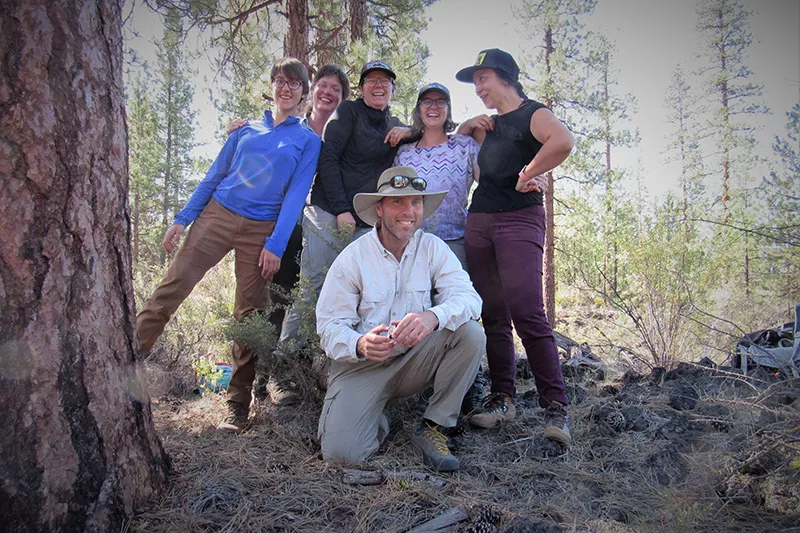
Matt Shinderman, Director
Matt serves as the fearless leader of the HERS Lab in addition to his duties as a senior instructor of natural resources and the program lead for the sustainability double degree at OSU-Cascades. He teaches courses ranging from endangered species ecology to rangeland ecosystems. His scholarly interests include ecological restoration and species adaptation to climate change. Under the HERS umbrella, Matt has helped develop the East Cascades Native Plant Hub and is working with the National Park Service to manage a park studies unit at OSU-Cascades. He is also involved in the wildlife crossing structure research being conducted at the lab. His work is focused on collaborative, applied science, which allows the HERS Lab to serve as a nexus for research, management recommendations, and curricula related to management of natural resources in the Pacific Northwest.
OSU-Cascades profile
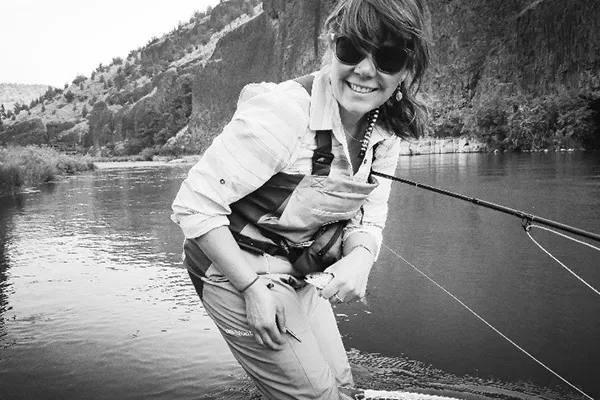
Corrinne Dombrowski, Project Lead
Corrinne has been with the Lab since 2017, applying her broad skill set gained from her BS in natural resources and wildlife management graduate certificate to multiple projects. However, her primary research focuses on employing remote cameras in wildlife ecology. As an undergraduate, she first began using camera traps to determine competitive behavior between turkey vultures and common ravens, prompting spirited interest in their utility within ecology. Since her introduction to their practicality, she has applied the technology to help determine American pika occupancy in lava flows with the Lab and sagebrush-obligate songbird nest success with the Eastern Oregon Agricultural Research Center. Corrinne recently completed her MS in environmental science while researching the effectiveness of Wildlife Crossing Structures along the U.S. Highway 97 Corridor.
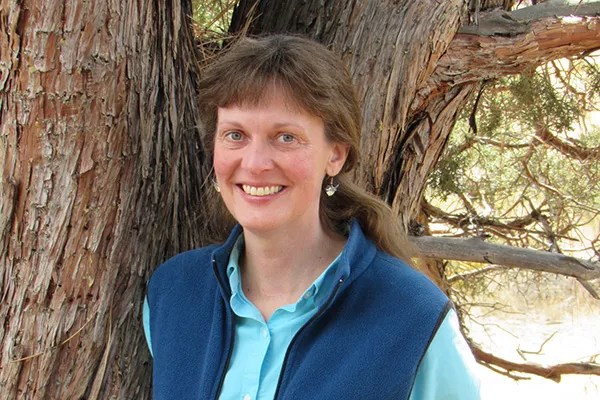
Diana Popp, GIS Specialist
Diana is a wildlife biologist and research analyst at the HERS Lab, where she specializes in exploring satellite imagery, sourcing spatial data, and designing maps and applications for various ecological projects. She holds a Bachelor of Science from The Evergreen State College, with an emphasis on field studies, and a post-baccalaureate certificate in GIS. Diana coordinated a five-year study of American pikas across three national parks and the Newberry National Volcanic Monument in Oregon. Her previous field research includes observational studies on wintering and nesting bald eagles, Oregon silverspot butterflies, and cavity-nesting birds. Currently, she is focused on mapping landscape and wildlife data for ongoing wildlife crossing research projects at the lab.
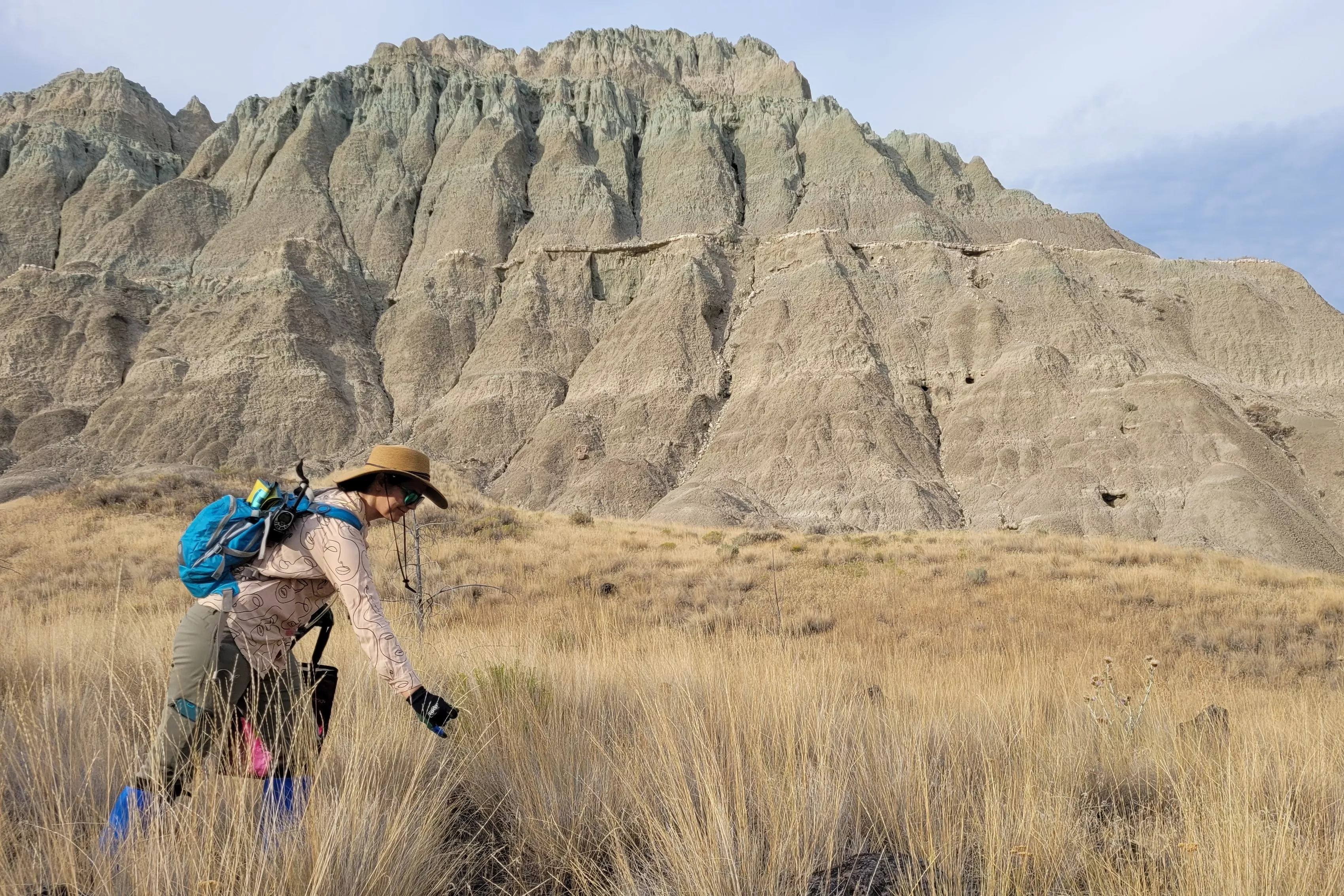
Emily Zamarripa, Propagation Coordinator
Emily tagged along during pika surveys in 2017, made herself at home, and never seemed to leave. “The lab never had a chance…” Emily recalls. Since her humble beginnings as a volunteer, Emily earned her BS in Fish and Wildlife Sciences from OSU and completed three research fellowships, building underwater fish cameras and researching white bark pine genetics for disease resistance. She later interned with the Upper Deschutes Watershed Counsel and monitored pre- and post-restoration of Whychus Creek. Prior to field research, Emily was an account manager for Verizon Wireless, traveling the Oregon Outback and working with small business owners. After climbing the corporate ladder, Emily was ready for a new challenge. “I was ready to let Nature take the wheel,” Emily explains. Today, Emily entertains the lab with tales of native plants, native plants, and more native plants.
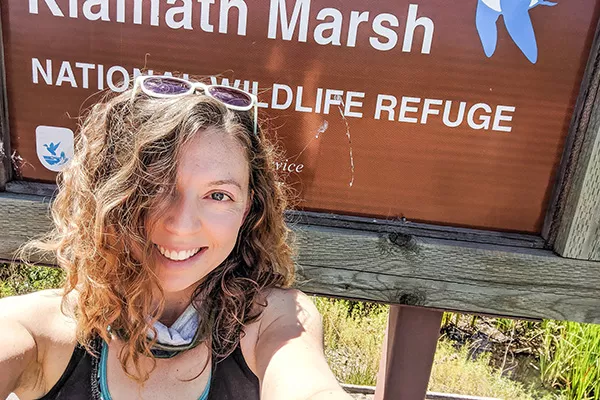
Sara Rose, Assistant Bat Hub Coordinator
Sara joined the HERS Lab in 2018 as a seasonal field technician for the Bat Hub. Since then, she has served as crew lead and assisted with data management, call processing, volunteer management, and community outreach. Currently, Sara serves as the Assistant Bat Hub Coordinator and assists with field crew management for regional bat monitoring projects. She also runs the Audible Bats Project, a hybrid approach to bat monitoring that incorporates citizen science and professional surveys at a regional scale. Sara received her BS from Oregon State University - Cascades in natural resources fish and wildlife conservation. In addition to her work with the bat crew, she completed wildlife research internships with the Deschutes National Forest and with Cardiff University at their research center in Malaysia and monitored pygmy rabbits for the Oregon Department of Fish & Wildlife.

Nadja Schmidt, Bat Biologist
Nadja is a bat biologist and research analyst for the Northwest Bat Hub and serves as our resident bat nerd. Nadja received her BS in Natural Resources from OSU Cascades and minored in Español. Before joining the HERS Lab, she worked for the Forest Service, conducting MAPS surveys and monitoring spotted owls, bats, foxes, bumblebees, eagles, and goshawks. In her role as crew lead for the Sister’s Ranger District, Nadja led the effort for bat monitoring for the Deschutes National Forest. She planned and implemented cave surveys, mist netting, white-nose surveillance, acoustic surveys, and habitat enhancement/improvement projects. She has also participated in international bat capture projects in Guatemala and Panama for pre-construction wind farm surveys. Nadja is a call-vetting wizard, and handles all of the Bat Hub's vetting for NABat, year-round monitoring, and other projects.
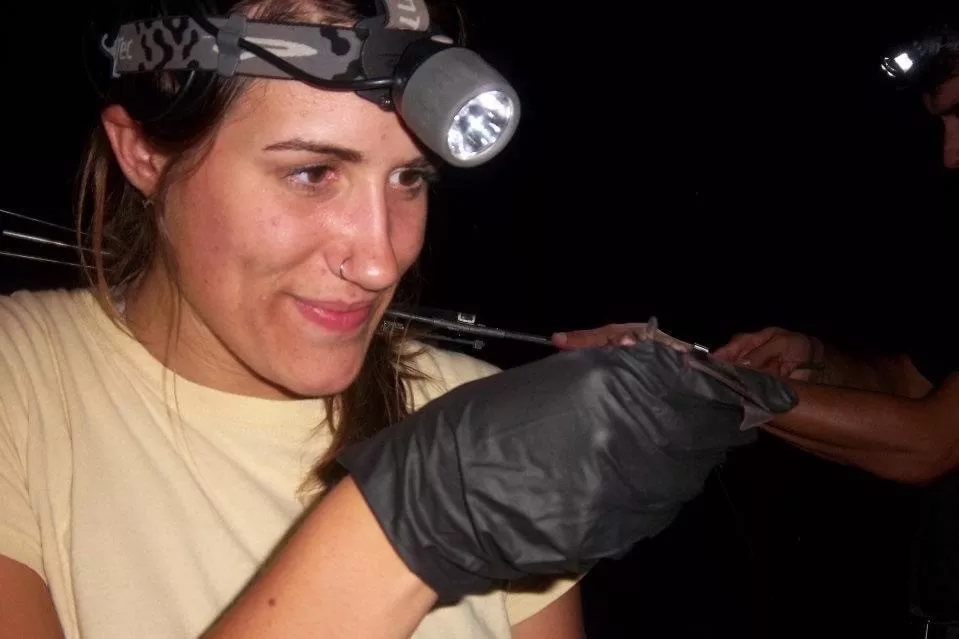
Beth Ward, Bat Hub Coordinator
Beth Ward is a Certified Wildlife Biologist® with a soft spot for creatures of the night. Her journey began at Radford University, where she earned a BS in Environmental Biology, and took flight during more than a decade as an environmental consultant navigating ESA compliance for bats across the U.S. Today, as the Bat Hub Coordinator, Beth leads collaborative efforts that bring together scientists, wildlife managers, and community partners to advance bat conservation across the Pacific Northwest. She is passionate about fostering interdisciplinary partnerships that bridge different sectors to create lasting conservation solutions for bats. When she’s not building bridges for bats, you’ll find her birding in the high desert or bopping around alpine trails in the Cascades (binoculars always within reach).
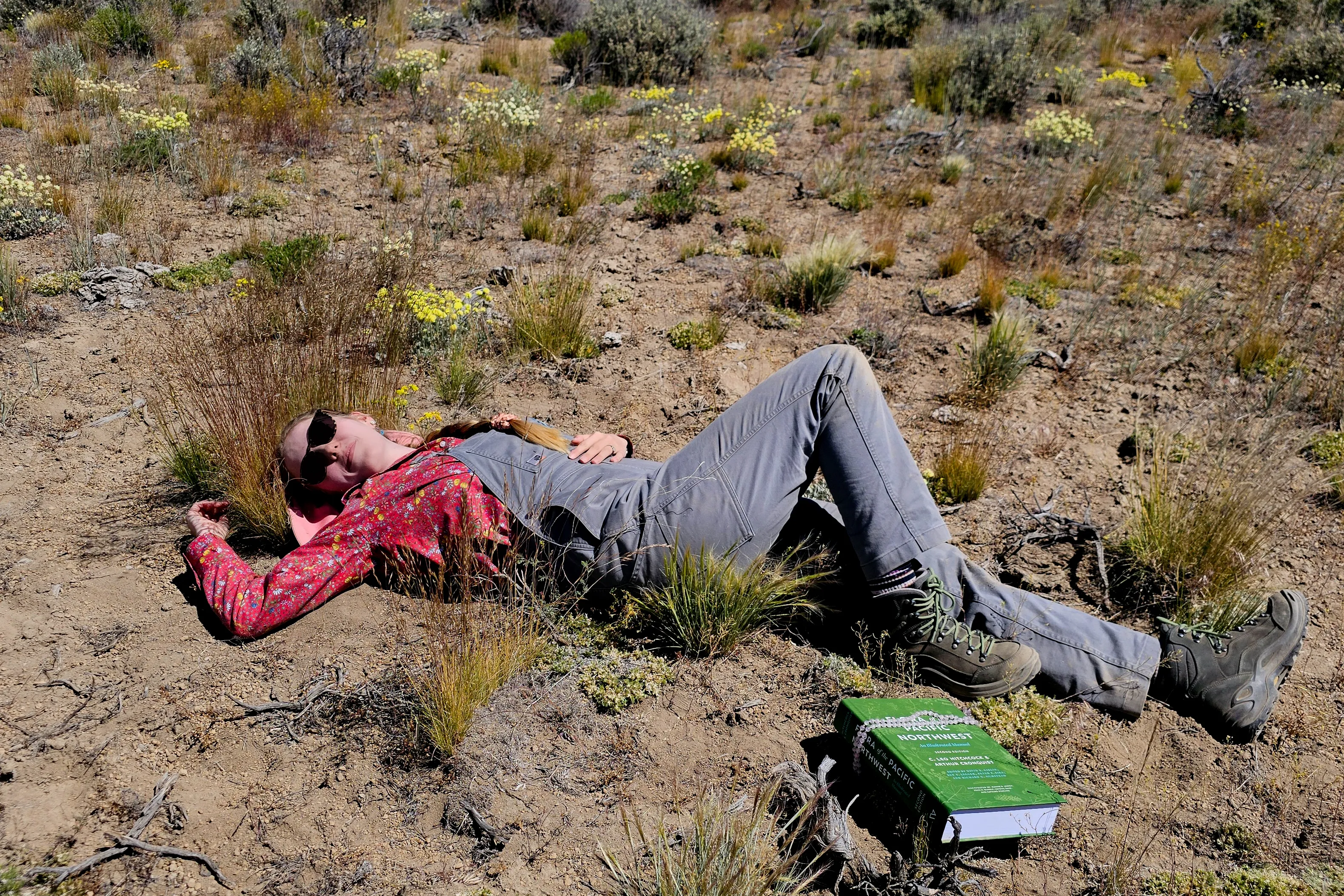
Hannah Johnson, Greenhouse Assistant Manager
Hannah joined the lab after a year of eavesdropping on plant hub projects and daydreaming about growing alongside them. Joining the team in 2024, she brought a contagious love of native flowers and a less contagious love of native grasses! Hannah earned her BS in Restoration Ecology at Utah State University, specializing in restoration research of native grasses and flexing her skills at national plant ID competitions. Before coming to the HERS lab, she broadened her plant skills working on rare plant surveys, herbarium management, oil well pad restoration, and native plant propagation. Hannah has made herself equally at home in the boisterous office as she is in the rangelands of Eastern Oregon. Her colleague has dubbed her "The Loquacious Wanderer," always roaming the sage steppe with copious plant observations and entertaining stories!
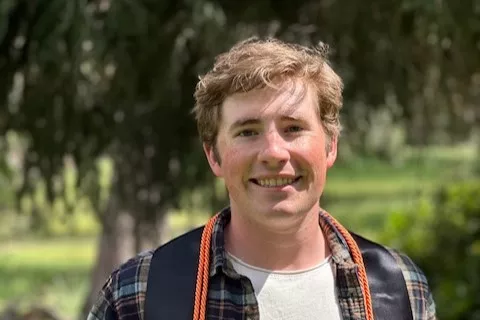
Noah Koker, Biological Science Technician
Noah joined the HERS Lab in March 2024 as a Student Research Technician Assistant for the wildlife crossing structure project. Before joining the lab full-time, Noah worked for ODFW at the Summer Lake Wildlife Refuge banding waterfowl, conducting brood and shorebird surveys, and assisting with revegetation projects. After earning his BS in Natural Resources with a focus on fish and wildlife, he was hired to be a full-fledged technician. In his new role working for the lab, Noah is researching the effectiveness of wildlife crossing structures on the U.S. Highway 97 corridor. He also serves as our multi-tool, jumping in wherever and whenever an extra set of hands is needed. Noah is a lifelong Bendite and as such he enjoys doing all manner of outdoor activities, no matter the time of year, including cross-country skiing, hiking, hunting, and fishing.

Matt Van Ess, Restoration Project Coordinator
Matt joined the HERS team in 2024 as our restoration coordinator, spearheading a multi-year sage steppe, riparian, and floodplain restoration project at the John Day Fossil Beds National Monument. Before becoming a HERSian, he led the efforts of the Columbia River Estuary Study Taskforce in Astoria, to design, implement, and monitor tidal reconnection and estuarine restoration projects benefiting migrating juvenile salmon. He has a Master’s in Community and Regional Planning from University of Oregon focused on coastal zone management in Pacific Islands using GIS. Matt hopes to expand HERS lab partnerships to continue large scale ecosystem restoration. Having moved to Bend, Matt now lives farther from the ocean than ever before. He has traded beachcombing and sea kayaking for snowboarding and river rafting.
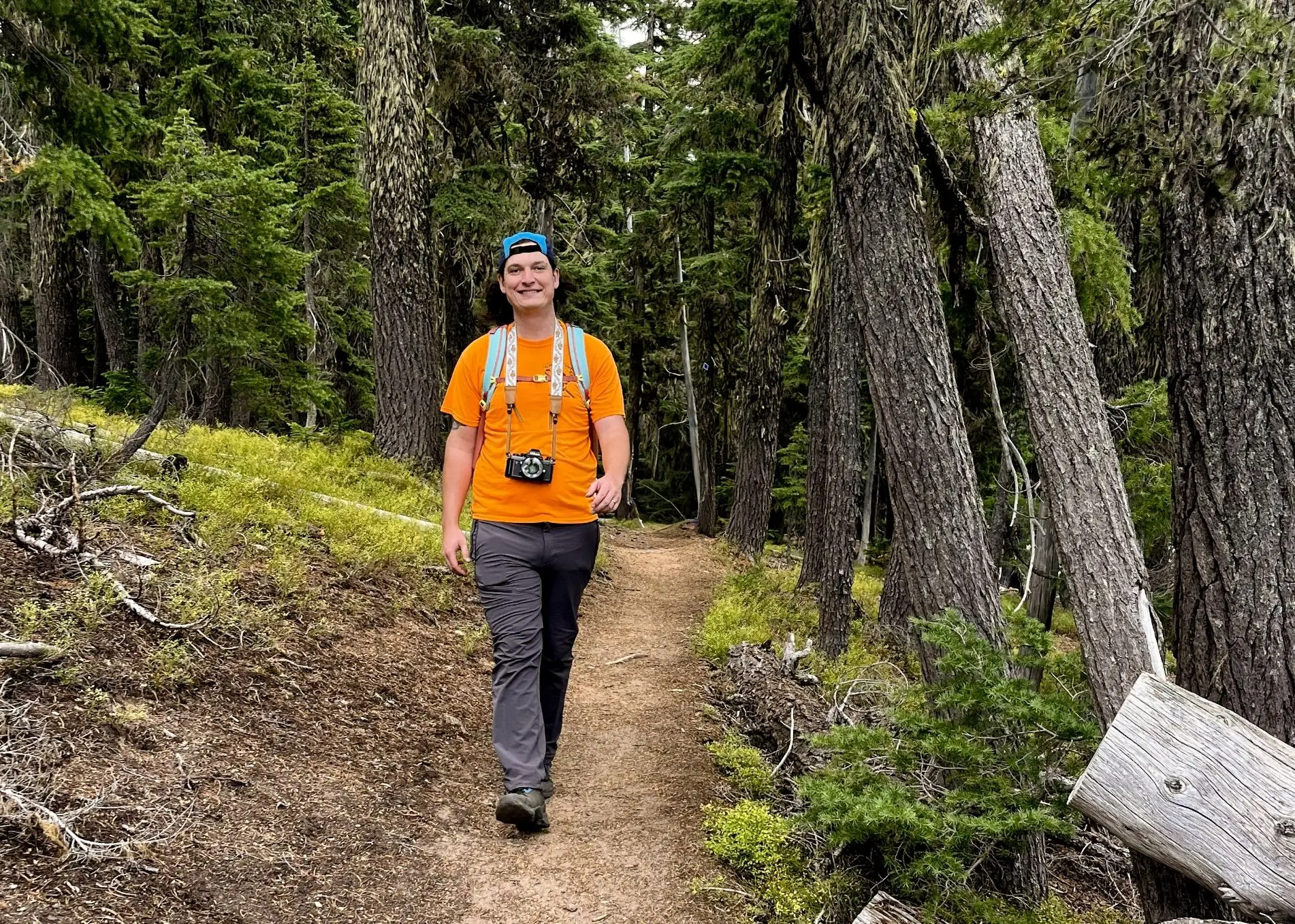
Alex Holmes, Camera Trap Project Lead
Alex is the newest member of our Wildlife Connectivity Hub. He comes to us with a lifelong interest in observing and preserving the natural world. Adding to our bevy of OSU-Cascades alums, this Louisianan lad has a bachelor’s in environmental science and seasonal experience trapping, assessing, and marking chub and trout in central Oregon. His focus now is on training an AI model for animal detections at wildlife crossing structures in Oregon. From setting and maintaining camera traps, to data management, to annotation, Alex is laying the groundwork for novel occupancy modeling methods to assess the efficacy of those structures. Outside of the office, he spends his time marveling at our big, western mountains and hanging with his wife and cats.
Hosted Partners
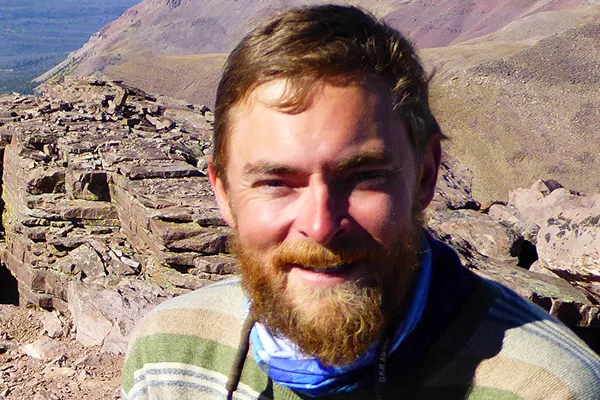
Devin Stucki (NPS), Botanist
Devin is an ecologist with the National Park Service Upper Columbia Basin Network Inventory and Monitoring Program. He leads fieldwork for several terrestrial vegetation monitoring projects including long-term monitoring of sagebrush steppe vegetation, rare plants, and pests, pathogens, and stand dynamics of high-elevation white pines. Devin earned an M.S. in forest ecosystems and society at Oregon State University, studying the effects of traditional harvest and climate on common camas populations in Weippe Prairie, Idaho, and has research interests in traditional ecological knowledge, forest pathology, and lichenology. Devin received a BS in botany from Oregon State University.
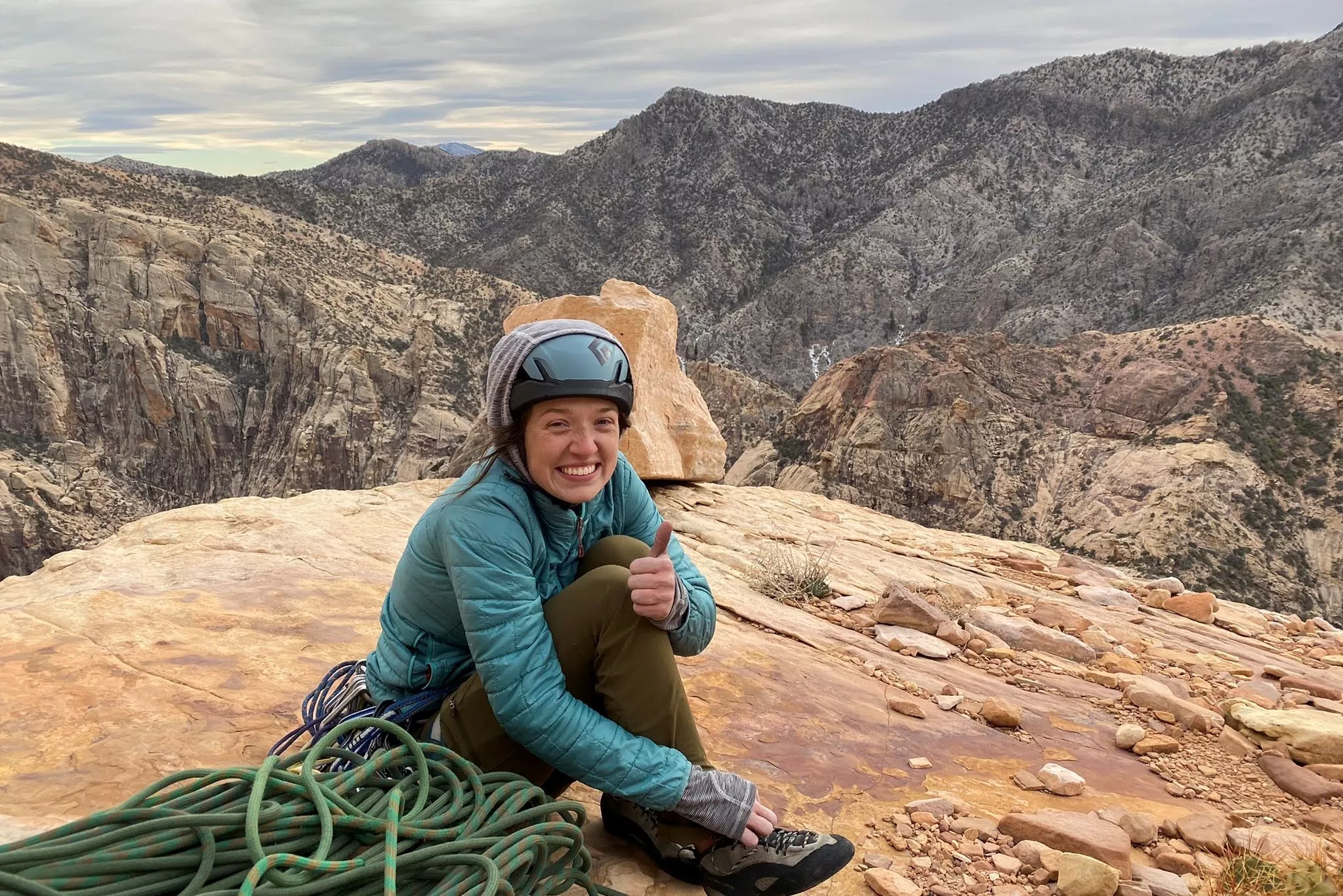
Sarah Barsch (NPS), Crew Lead
Sarah is a biological science technician for the National Park Service Upper Columbia Basin Network Inventory & Monitoring program. She is the crew lead for long-term monitoring of sagebrush steppe vegetation, rare plants, aspen stands, and limber and pinyon pine disease and population dynamics. She earned a BS in biological science with a concentration in ecology, evolution, biodiversity, and conservation from California Polytechnic State University in San Luis Obispo in 2021. Before working for the UCBN, Sarah’s professional experience with the National Park Service includes piloting field methods for assessing the impacts of plague on the American pika and associated small mammals, acoustic monitoring and white nose surveillance of bats, and monitoring upland shrub communities in the Mojave Desert.

Amy Alverson (NPS), Native Plant Biologist
Amy is a Native Plant Biologist with the National Park Service Upper Columbia Basin Network. She helps to coordinate the acquisition of native plant materials for future fire recovery efforts by training and leading seed collection crews throughout the sagebrush regions of eastern WA, OR, and ID. She earned a BS in Environmental Science from Loyola Marymount University in 2021. Before joining NPS, she worked on a seed collection crew in the Humbolt-Toiyabe National Forest in the Great Basin and as a crew lead for the California Botanic Garden in the Mojave Desert in California. Outside of seed collection, she has worked on southern California rare alpine plant seed banking, endemic Quercus durata var. gabrielensis conservation collection, and assisted with seed coating technology research for the restoration of native bunchgrasses to disturbed sagebrush habitat.